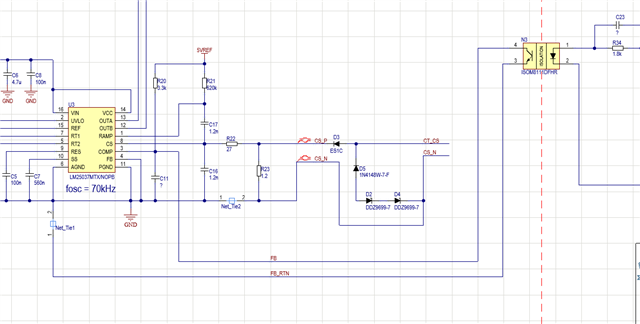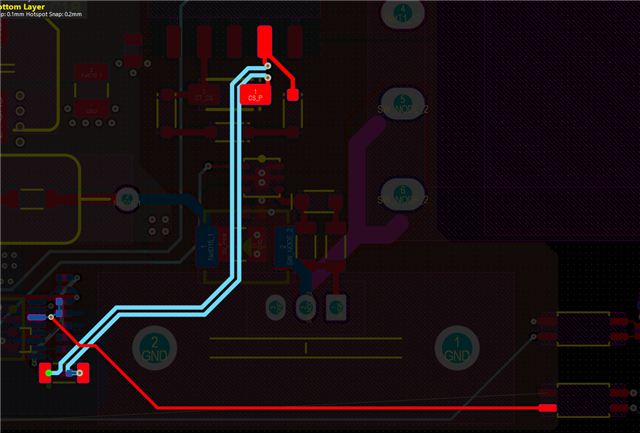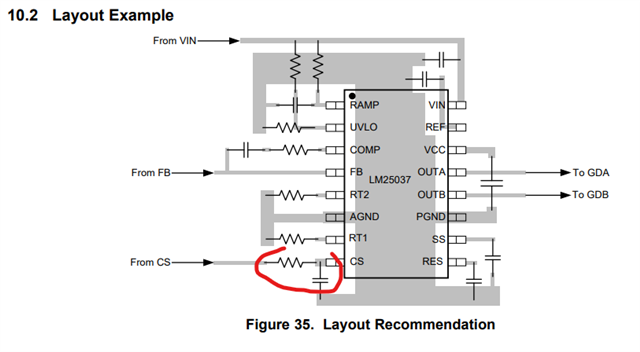Tool/software:
I’m designing a 12V–360V push-pull converter using the LM25037. The primary current is measured with a current transformer. Should the sense resistor be placed close to the CT transformer or close to the LM25037? Currently, the sense resistor is placed directly next to the LM25037. The CS_N pin is connected to the IC’s AGND. Also, should the emitter of the opto-emulator used for feedback be connected directly to the IC’s AGND as well? It is located about 4.5 cm away from the IC. Could you please provide some layout design advice?
The schematic and layout details are attached.



